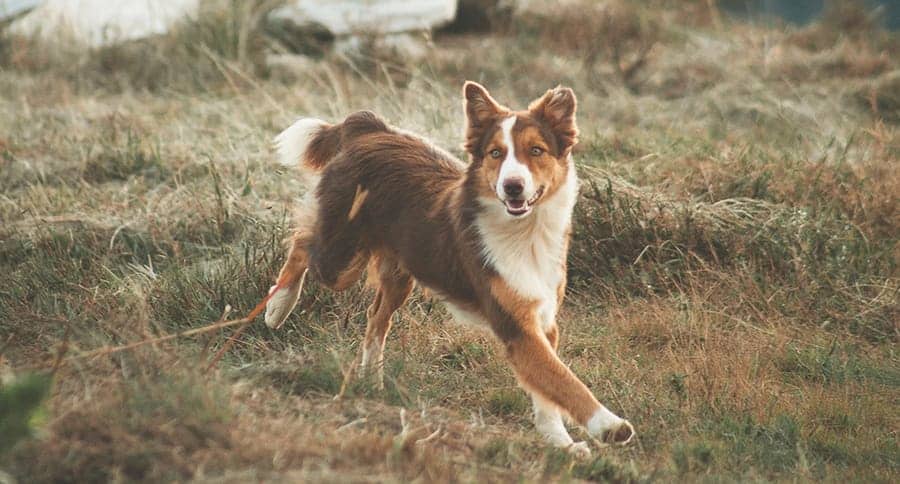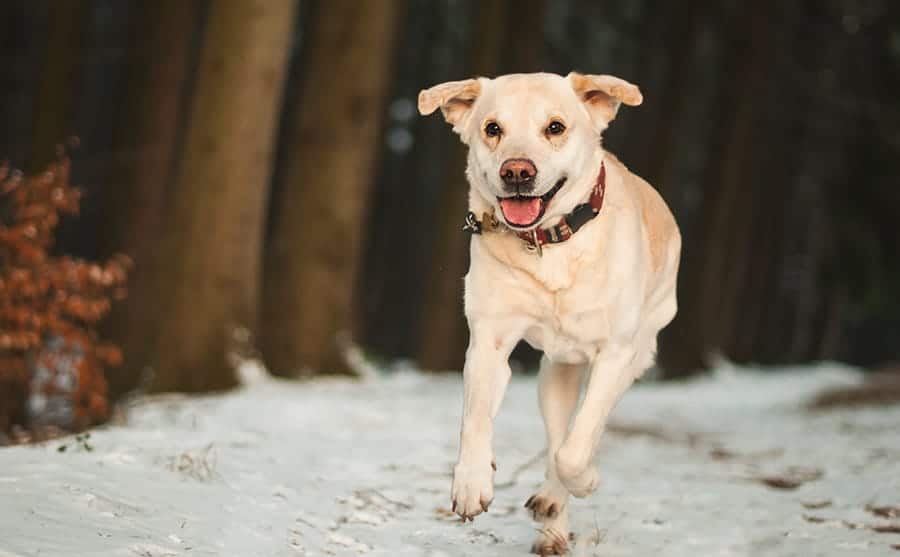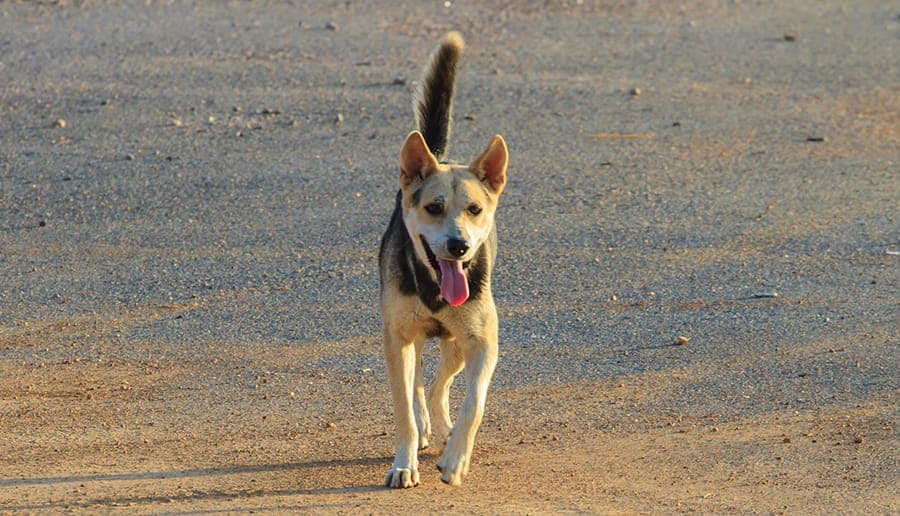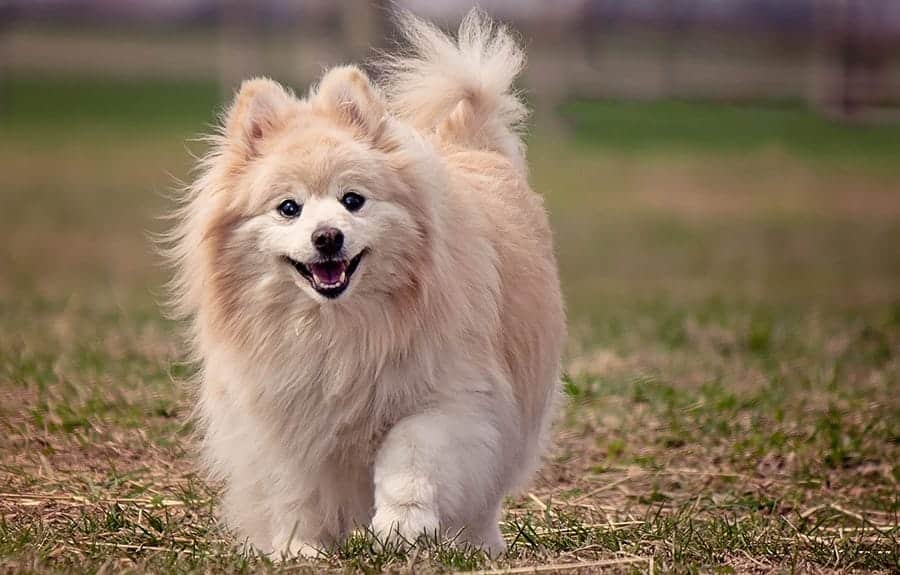How to Train a Dog to Come – The Skill You MUST Know
Published: Last updated: by Jessi Larson Affiliate Disclosure: We hope you love the products we've recommended! As an Amazon Associate we earn a small share from qualifying purchases.Dogs love to explore the wide world around them, which makes it all the more important to learn how to train a dog to come when called. We’ll show you how to teach your pup this essential – and potentially lifesaving! – command in no time.

Training Guide: How to Train a Dog to Come
Here is everything you need to know about teaching your dog this essential command.
Steps to Get Started
1. Prepare a Reward
Dogs love rewards! This is great for training because it enables you to provide positive reinforcement when your dog listens to you.
The best type of reward: A small dog treat that is delicious and nutritious.
Other rewards for a job well done include a pressing a clicker if you’re training with one, affection from you or a positive verbal affirmation.
These rewards help your dog learn that when they obey your command, good things, fun things, or yummy things will happen.

2. Begin Indoors
When you get started with your training, you’ll want to be indoors and away from distractions.
Remember, dogs get distracted very easily, which is one of the main reasons this command is so important. By keeping your dog indoors, you’ll be able to minimize things that would distract them from learning.
After you’ve mastered this command indoors, you’ll be able to take them outside and practice with distractions.
3. Make it Fun and Positive
The best way to train your dog with anything is to make it into a positive, fun activity. If your dog is enjoying the training, they’ll pick it up easier.
If you treat it like a fun game you’re both playing together, your pup will be much more successful when you work on how to train a dog to come.

How to Train a Dog to Come
Now that you’re prepared, let’s dive into how to train a dog to come. These simple 8 steps will walk you through everything you need to know.
1. Start at a short distance
Always start at a close distance, say around 10 feet. This makes the process straightforward and easier to understand when your dog is first getting started.
You’ll gradually move back farther and farther as you progress in the training, but for now, keep it short.
2. Instruct Them to “Come”
Next, make eye contact with your pup and say the command “come” in a clear, confident, positive manner.
You can say their name to get their attention but always follow it up with the “come” command so they know what’s expected of them.
3. Add Some Encouragement
As you instruct your dog to come to you, act excited and encouraging. This can include clapping your hands, patting your legs or another action to get their attention.
Make sure you continue saying the command “come” the entire time until your dog gets all the way to you.
4. Give Them a Reward
When your dog does get to you, provide a positive affirmation such as exclaiming “Yes!”, then give them a treat. If you’re using clicker training, now would be the time to press it.
These actions provide positive reinforcement and signal to your dog that it’s a job well done.
5. Extend the Distance
Once your dog is getting a hang of the process, take several steps back and repeat the process from a longer distance.
You’ll eventually work your way to starting in a separate room where your dog can’t see you.
6. Repeat the Process
Repetition is key to training success. Before you go outside, practice over and over again until you feel your dog gets the hang of the process.
7. Introduce Distractions
Dogs get distracted easily – by toys, people, other animals, new objects, you name it.
To help your dog overcome these distractions and focus on the command, add in small distractions into the room when practicing. This can include a chew toy, ball or another object they like.
After the new element has been added, repeat steps 1-7 until mastered.
8. Take it Outside
Once you’re confident in your dog’s ability to come when called, head outside and practice outdoors.
It’s always good to first practice in a contained area if you can, like a fenced in yard.

Tips for Training Success
As you work on the steps above for how to train a dog to come, here are additional tips and tricks that will help ensure success.
Ensure Your Cue is Clear and Positive
Oftentimes people ruin their training cues by overusing them or giving them a negative connotation.
If you’re repeating the “come” command over and over again without results, it will start to confuse your dog or become background noise. If your dog isn’t getting the expectations of your word, take a break and start again later.
Issues can also arise if you yell or sound angry. This creates a connection in your dog’s mind that what is happening is negative, making them not want to obey the command or do so begrudgingly.

Don’t “Punish” Your Dog for Obeying
Sometimes people unintentionally “punish” their dog when they come back successfully.
For example, if you’re at the park and call for your dog to “come,” just to put the leash on them and walk them to the car to leave, a dog will feel as though they are being punished.
If there is something that your dog doesn’t like, don’t use the cue to get them to you at first. This might be bathtime, medicine time or even grooming time.
Don’t create negativity around your cues in the beginning, or they will likely start to ignore them.
Instead, just go to your dog, put them on a leash, and walk them to the activity they don’t like. This will prevent them from connecting your cue with negativity.
Be Patient and Persistent
As you work on how to train a dog to come, you may get frustrated at times. Don’t stress, that’s to be expected. Training a dog is hard work!
If you feel like you’re not making progress and getting frustrated, take a time out and count to 10. You’ll feel refreshed and ready to start up again.
Training a dog requires patience, persistence and consistency. The goal is to continually and clearly communicate your expectations in a calm but confident manner. This sends a strong message to your dog about what you want them to do and how they need to act.
Dogs can sense if you’re hyper or angry, so taking a few moments to center yourself will make the training process much easier.

Final Thoughts on How to Train a Dog to Come
Dogs are a man’s best friend. With this in mind, it seems that they’d instinctively want to come to their owner when called, right?
Unfortunately, that’s not the case.
This can be a problem, especially because dogs tend to run off after every sound or movement, easily distracted and hyper-aware of the things happening around them.
You need your dog to hear the command to come and respond instantly, especially if they’re headed off into danger.
That’s why learning how to train your dog to come is essential. It will prevent them from getting in trouble and could literally save their life.
Your dog should learn the skill quickly, but it’s always a good idea to periodically refresh their knowledge.
That way the next time your dog runs off after a squirrel, you’ll be able to call them right back to you!
Watch a Training Video
As you learn how to train a dog to come, sometimes it helps to see the process visually.
Dog trainer Zak George offers positive, fun and informational training videos on a wide range of topics, including how to train a dog to come.
We recommend you check this out so you can see the process in real life and pick up additional tips and tricks he has to offer.
The more education, the better, and this is a great resource on how to quickly teach your dog to come.



 Getting a New Dog?
Getting a New Dog?